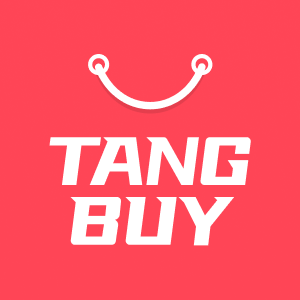What Makes Blind Dropshipping Different and How It Works

You might wonder why some retailers never reveal where your package really comes from. Blind dropshipping keeps the supplier’s name and branding hidden from your customers. This means your buyers only see your shop’s details. You get more control over your brand image. Customers trust you more because they never spot a third-party supplier. Think of it as a way to build a stronger connection with your audience, while keeping your business partners in the background.
Key Takeaways
Blind dropshipping keeps the supplier’s name hidden. Customers only see your shop’s name and logo. This way, you can build trust with buyers. Your brand stays safe because supplier details are secret. You do not keep any products in stock. The supplier sends items straight to your customers. The packages show your shop’s branding. Blind dropshipping can cost more money. You may have fewer suppliers to pick from. But you get better control over your brand. It is very important to talk clearly with suppliers. This helps make sure the packaging is right. It also helps stop mistakes from happening. You must handle all customer service and returns. This keeps your business looking professional and steady. Pick good suppliers you can trust. Test product quality by ordering samples. This makes customers happier. Always follow the law and platform rules. This keeps your shop safe and trusted.
Blind Dropshipping
Definition
Blind Dropshipping is a way for you to sell products online without ever showing your customers where the items come from. When someone places an order in your shop, you send the details to your supplier. The supplier then ships the product straight to your customer. The key difference is that all the supplier’s information—like their name, address, or branding—gets removed from the package and shipping documents. Your customer only sees your shop’s details. They believe the product comes directly from you. This method helps you build your brand and stops customers from trying to find your supplier and buy from them directly.
Blind Dropshipping lets you:
Keep your supplier’s identity hidden.
Use custom labels or plain packaging.
Protect your brand and customer relationships.
Avoid losing customers to your supplier.
You get to control how your business looks to the outside world, even though you never touch the products yourself.
The 'Blind' Aspect
So, what does the ‘blind’ part really mean? In Blind Dropshipping, ‘blind’ refers to the way you hide the supplier’s identity from your customer. You ask your supplier to ship products without any flyers, invoices, or promotional materials. No QR codes, no stickers, and no supplier branding. Sometimes, you even leave a note with your order, making it clear that nothing should reveal the original source.
This approach keeps your customers from seeing the real cost of the product or finding out where it came from. It also stops them from getting confused or frustrated if they spot a different company’s name on the package. By keeping things ‘blind’, you make sure your customers trust your shop and come back for more.
You keep the illusion that your shop handles everything.
Your customers never see the supplier’s details.
You avoid negative reviews caused by confusing packaging.
Who Is 'Blind'?
You might wonder who is actually ‘blind’ in Blind Dropshipping. The answer is simple: it’s your customer. Your supplier and you both know what’s going on. You send the order to the supplier, and the supplier ships the product. But your customer only sees your shop’s name and details. They have no idea another company is involved.
This setup protects your business. Your customer cannot contact the supplier or try to get a better deal. You keep your brand strong and your customer relationships safe. The whole process makes your customer ‘blind’ to the real source of their order, while you stay in control.
Blind Dropshipping vs Traditional

Key Differences
You may ask what makes Blind Dropshipping different. The biggest changes are in how you hide supplier details, use packaging, and control your brand. Here is a simple table to show the differences:
Operational Aspect | Blind Dropshipping | Traditional Dropshipping |
|---|---|---|
Supplier Identity | Supplier details are hidden using a Blind Packing List. | Supplier information is visible on packing lists and shipments. |
Packaging & Documentation | No supplier branding or promotional materials; looks like it comes from your shop. | Packaging often includes supplier branding and contact details. |
Communication Process | Needs clear agreements to keep supplier anonymous. | Standard communication with no anonymity concerns. |
Cost Implications | Usually higher costs due to extra handling and special packing. | Lower costs as shipments are direct and simple. |
Branding Focus | Strong focus on building your brand and customer trust. | Less focus on branding since supplier details are visible. |
Supplier Selection | Limited to suppliers who offer blind shipping. | More choice based on quality, price, and speed. |
Returns Handling | Returns go to your address to keep things hidden. | Returns may go straight to the supplier. |
Blind Dropshipping lets you control your brand more. But it can cost more and you may have fewer suppliers to pick from.
Similarities
Both Blind Dropshipping and traditional dropshipping work in a similar way. You do not keep any stock. When a customer buys something, you send the order to your supplier. The supplier ships the product straight to your customer. You act as the middle person and make sure things go well.
The way products move is the same for both models. Suppliers or fulfilment centres pick, pack, and send the items. Your customer wants fast delivery and good quality, no matter which model you use. Both ways can link to your online shop for easy order tracking. The main thing that changes is what your customer sees on the package.
Choosing a Model
How do you pick the right model for your shop? Here are some things to think about:
Check your costs. Dropshipping helps you save money on storage.
Think about risk. You do not need to worry about keeping stock.
Want to sell more products? Both models let you do this without holding items.
Enjoy flexibility. You can run your shop from anywhere at any time.
Delivery speed is important. Some suppliers have warehouses in different places, so orders arrive faster.
Think about brand protection. If you want your shop to look professional and keep supplier details secret, Blind Dropshipping is best.
Check supplier support. Not all suppliers offer blind shipping, so you may have fewer choices.
Tip: If you want a strong brand and to keep supplier details private, Blind Dropshipping is a good choice. If you want lower costs and more suppliers, traditional dropshipping may be better for you.
Process Overview

Order Flow
Let’s walk through what happens when someone buys from your shop using blind dropshipping. The process is simple, but you need to pay attention to the details. Here’s how it usually works:
Your customer places an order on your website.
You send the order details to your supplier.
The supplier prepares the product and gets it ready for shipping.
All supplier branding, invoices, and promotional materials are removed from the package.
The supplier ships the product straight to your customer, but the package only shows your shop’s name and contact information.
Your customer receives the parcel and believes it came directly from you.
You keep your brand front and centre. Your customer never sees the supplier’s name or address. This keeps your business looking professional and helps you build trust.
Tip: Always choose suppliers who understand blind shipping. Make sure you clearly explain your requirements so nothing slips through the cracks.

Supplier Role
Your supplier plays a big part in blind dropshipping. Their job goes beyond just sending out products. They must keep your identity safe and make sure your customer never finds out about them. Here’s what they do differently:
In standard dropshipping, suppliers send out packages with their own branding. Your customer can see where the product came from.
In blind dropshipping, the supplier hides all their details. They use special packing slips and labels that only show your brand.
This protects your business. Your customer cannot contact the supplier or try to buy directly from them.
The supplier works closely with you. They follow your instructions and use special paperwork to keep everything secret.
This teamwork helps you give your customers a smooth, branded experience.
You need to pick suppliers who know how to handle blind shipping. They must pay attention to every detail, from packing to paperwork.
Packaging
Packaging is where blind dropshipping really stands out. You want your customer to feel like the product came straight from your shop. Here’s how you and your supplier make that happen:
Use packaging and shipping labels that show your shop’s name, not the supplier’s.
Replace any supplier names with your brand on all boxes, packing slips, and invoices.
Choose plain or white-label packaging to keep things simple and professional.
Make sure all shipping documents match and never reveal the supplier’s information.
Keep accurate customs and legal paperwork behind the scenes, but only show your details to the customer.
If you work with experienced suppliers and logistics partners, you can avoid mistakes. This keeps your brand strong and your customers happy.
Note: Good packaging does more than hide the supplier. It also makes your shop look trustworthy and helps you stand out from the crowd.
Communication
Communication in blind dropshipping works a bit differently from what you might expect. You do not talk to your customers about your suppliers. Instead, you act as the bridge between your customer and your supplier. This setup keeps your supplier’s identity hidden and your brand front and centre.
Let’s break down how you manage communication in blind dropshipping:
You receive an order from your customer through your online shop.
You send the order details to your supplier, making sure to include instructions for blind shipping.
Your supplier prepares the package. They use special shipping documents, like a blind bill of lading, which hides their details and only shows your shop’s information.
You and your supplier agree on clear rules. These rules help everyone know what to do and avoid mistakes.
You set up systems to manage all the paperwork and labels. This keeps everything organised and ensures nothing slips through the cracks.
You train your staff to handle blind shipments properly. Everyone needs to know how to keep supplier details secret.
You use tracking systems to watch every shipment. This helps you answer customer questions quickly and spot any problems early.
Tip: Always double-check your instructions to the supplier. A small mistake in the paperwork can reveal your supplier’s identity and break the trust you have built with your customers.
You never let your customer contact the supplier directly. If your customer has a question or a problem, they come to you. You then talk to your supplier on their behalf. This way, you control the flow of information and keep your business relationships safe.
Your supplier also needs to know how to handle blind shipping. They must follow your instructions and use the right documents. If they make a mistake, your customer might see another company’s name on the package. That can cause confusion and damage your brand.
Note: Good communication with your supplier is just as important as good communication with your customer. When you work closely with your supplier, you can solve problems faster and keep your customers happy.
In blind dropshipping, you become the main point of contact. You answer all customer questions, handle returns, and solve any issues. Your customer always feels like they are dealing with your shop, not a third party. This careful approach to communication helps you build trust and loyalty, making your brand stronger in the long run.
Unique Features
Anonymity
You want your customers to see only your shop’s name. This is called anonymity. Blind dropshipping keeps your supplier hidden. Your business partners stay in the background. Your customers never know who sent the product.
Here are ways to keep things anonymous:
Change shipping labels and papers to show just your business.
Speak clearly with your supplier so no details get into the parcel.
Use double blind shipping if you want both sides to stay unknown.
Work with delivery partners who know blind shipping rules.
Ask the maker to send products without any branding or supplier details.
You can also take out supplier names from invoices and packing slips. Some sellers even swap shipping papers at depots before the parcel gets to your customer. This keeps your business safe and your supplier’s name secret.
Note: Anonymity stops customers from skipping you and buying from the supplier.
Brand Control
You want your brand to stand out. Blind dropshipping gives you more control over how your shop looks. You choose what goes on the box, the labels, and the return address.
Customers only see your details, which builds trust.
No supplier information is on the shipping papers, making your shop look more professional.
By hiding the supplier’s name, you make sure customers link the product to your brand. This keeps your customers safe and helps you build loyalty. Even if you cannot change the product, you still control the packaging and the shopping experience.
Tip: Brand control is important if you want to grow your business and stand out.
Customer Experience
Your customers want a simple and easy shopping trip. Blind dropshipping helps you give them this. When you hide supplier details, your customers feel like they buy straight from your shop.
Here is how you keep your customers happy:
Show products on your website without saying where they come from.
Send orders to a supplier who does blind dropshipping.
Make sure the supplier uses your company details on all shipping papers.
Ship products straight to customers, hiding all supplier information.
You should always pick good suppliers with quality products and service. Double-check shipping papers to stop mistakes. Give clear instructions to everyone. This way, you avoid delays and keep your customers happy.
Customers trust your shop more when they see only your branding. A smooth experience means they are more likely to come back.
Pros and Cons
Advantages
Blind dropshipping gives you some big wins if you want to grow your online shop. You get to protect your business and keep your brand strong. Here’s what you can expect:
Protect your business interests: Your supplier never contacts your customers. You stop them from stealing future orders or undercutting your prices.
Build customer trust: Your customers see only your shop’s name. They think you hold the stock yourself, which makes your shop look more reliable.
Keep your brand consistent: You control the packaging, shipping labels, and even the return process. This helps you give every customer the same experience.
Save money: You do not need to rent a warehouse or pay for storage. You cut down on insurance and other overheads.
Offer more products: You can list a wide range of items without buying them first. This lets you test new products with little risk.
Work from anywhere: You can run your shop from home, a café, or even while travelling. You just need a good supplier who understands blind shipping.
Faster delivery: Suppliers often ship straight from their own warehouses. This can mean quicker delivery times for your customers.
Here’s a quick look at the main advantages:
Advantage | What It Means for You |
|---|---|
Branding and Control | You decide how your shop looks and feels to customers. |
Protecting Brand Identity | Your supplier stays hidden, so your brand stays strong. |
Flexibility and Scalability | You can add new products easily and grow your shop without big costs. |
Reducing Costs and Increasing Margins | You save on storage and can set your own prices. |
Improved Delivery & Customer Satisfaction | Your customers get their orders faster, which keeps them happy. |
Tip: Blind dropshipping helps you build a loyal customer base by giving them a smooth, branded experience every time. 😊
Disadvantages
Blind dropshipping is not perfect. You will face some challenges that you need to manage carefully. Here are the main drawbacks:
Lower profit margins: You might pay more for each product because you cannot buy in bulk. This can make it harder to compete on price.
Less control over orders: You do not pack or ship the products yourself. Sometimes, suppliers make mistakes or run out of stock. This can lead to delays or unhappy customers.
Customer service headaches: If something goes wrong, you must talk to your supplier to fix it. You cannot check the product before it ships, so you rely on your supplier’s quality.
Returns can be tricky: Handling returns takes more effort. You may need to accept returns at your own address to keep the supplier hidden.
Supplier choice is limited: Not every supplier offers blind shipping. You may have fewer options, which can affect your product range or delivery speed.
Note: You need strong communication with your supplier to avoid mistakes. Always check that they understand your blind shipping needs.
Blind dropshipping gives you more control over your brand, but you must stay on top of your supplier relationships. If you want to keep your customers happy, you need to solve problems quickly and keep your shop running smoothly.
Getting Started
Finding Suppliers
You want to start strong, so finding the right supplier is your first big step. Not every supplier fits the blind dropshipping model. Some show their branding or do not offer plain packaging. You need to look for suppliers who understand your needs and can keep your business details private.
Here’s what you should do when picking a supplier:
Prepare a clear pitch about your shop and how much you plan to sell.
Ask about order minimums, discounts for bulk orders, delivery times, and their experience with dropshipping.
Always request product samples. This helps you check the quality before you commit.
Negotiate terms for payment, shipping, and how they process orders.
Build a good relationship with your supplier contact. This makes everything run smoother.
Make sure you have a legal agreement in place to protect both sides.
You should also check independent reviews. Look for suppliers with lots of positive feedback. Avoid anyone who refuses to send samples or has poor product quality. Watch out for suppliers who charge strange monthly fees or do not have proper contact details. Use trusted directories or marketplaces to find real suppliers. Trust your gut—if something feels off, move on.
Here’s a quick table to help you compare suppliers:
Criteria | What to Look For |
|---|---|
Product Range and Niche Fit | Products that match your shop or allow you to test new ideas |
Shipping Speed and Location | Warehouses close to your customers for faster delivery |
Platform Integration | Easy connection with your online shop (like Shopify or WooCommerce) |
Pricing and Transparency | Clear prices, no hidden fees, and possible discounts |
Inventory and Order Management | Real-time stock updates to avoid selling out-of-stock items |
Customer Support & Policies | Fast replies, clear returns, and blind shipping options |
Reputation and Reviews | Good reviews and proof of reliable service |
Tip: Order several samples from different suppliers. This helps you spot the best one for your shop.
Setting Up
Once you have your supplier, it’s time to set up your shop. Pick products that people want. Use tools like Google Trends to see what’s popular. Choose a supplier who offers quality, fair prices, and quick shipping. Some suppliers even let you add your own branding.
Set up your online shop using a platform like Shopify. These platforms make it easy to design your shop and connect with your supplier. You can use apps to automate product listings and manage orders. Make your shop look good and easy to use.
Now, get the word out. Use social media like Instagram, Facebook, or TikTok. Share photos, videos, and stories about your products. You can also work with influencers or use affiliate marketing to reach more people.
Note: A simple, clean shop with clear product photos and easy checkout keeps customers happy.
Quality Checks
You never see the products before your customers do, so quality checks are vital. Start by setting clear rules with your supplier. Write down what you expect for product quality, packaging, and delivery.
Here’s how you can keep quality high:
Communicate clearly with your supplier about your standards.
Use strong packaging to protect items during shipping.
Make sure labels are correct to avoid mistakes.
Track every order so you know where it is at all times.
Work with trusted delivery companies for fast, safe shipping.
Use inventory management tools to keep an eye on stock and orders.
Check in with your supplier often. Ask for updates and do regular reviews.
Keep a backup supplier in case something goes wrong.
Collect feedback from your customers and act on it quickly.
Customers remember good service. If you fix problems fast, they are more likely to shop with you again.
Legal Points
When you start a blind dropshipping business, you need to think about the legal side. You want to keep your shop safe and avoid trouble. Here are the main legal points you should know:
Dropshipping is legal. You can run your shop this way as long as you follow the rules. You sell and market the products. Your supplier ships them out. This setup is allowed on most e-commerce platforms.
You are responsible for product quality. If a customer gets a fake or faulty item, you must fix the problem. Always pick reliable suppliers. They help you avoid legal risks and unhappy customers.
You must be the seller of record. On sites like Amazon, you need to show that you are the real seller. All receipts, packing slips, and shipping labels should have your business name, not your supplier’s. This keeps your shop looking professional and follows the rules.
Never ship from another online retailer. It is not legal to buy from one shop and send it straight to your customer. You also cannot use packing slips that show the supplier’s details. Always make sure your information is on every document.
Follow platform policies. Each marketplace has its own rules. You must process orders, handle returns, and answer customer questions. If you break these rules, you could lose your shop.
Be honest about your business. Blind dropshipping is legal if you do not lie about where the product comes from. You should not mislead your customers. Make sure your shop’s details are clear on all paperwork.
Handle returns yourself. Since your customers do not know the supplier, you need to manage returns. Give them your address or a return centre you control. This keeps the process smooth and protects your supplier’s identity.
Work with suppliers who understand blind dropshipping. Not every supplier will hide their details. You need to check that they can ship orders with your branding and follow your instructions.
Tip: Always read the rules for each platform before you start selling. If you are not sure about something, ask a legal expert. This helps you avoid mistakes and keeps your business safe.
You want your blind dropshipping shop to run smoothly. By following these legal points, you protect your brand and build trust with your customers. Stay organised, keep your paperwork in order, and always put your business name front and centre. That way, you can focus on growing your shop without worry.
Blind Dropshipping stands out because your customers never see the supplier’s details. You keep your brand safe and avoid confusion over prices or packaging. Here’s a quick recap:
You protect your business and build trust.
You rely on your supplier for quality and delivery.
| Is Blind Dropshipping right for you? | Consider if you want to test new products, lower overheads, and keep your supplier hidden. Make sure your supplier meets your standards for quality and speed. Always think about what your customers expect from your brand. |
If you want control over your brand and less risk, Blind Dropshipping could be a smart choice.

FAQ
What is the main benefit of blind dropshipping?
You keep your supplier hidden. Your customers only see your shop’s name. This helps you build trust and protect your brand. You also stop customers from buying directly from your supplier.
Can I use blind dropshipping on any e-commerce platform?
Most platforms allow blind dropshipping. You must check each platform’s rules. Some sites, like Amazon, have strict policies. Always read the guidelines before you start.
How do I make sure my supplier follows blind shipping rules?
You need clear communication. Write down your requirements. Ask your supplier to confirm they can hide their details. Order a test product to check the packaging.
Will my customers know I use a dropshipping supplier?
No, if you do blind dropshipping correctly. Your customers only see your branding. They will not find out about your supplier unless there is a mistake in the paperwork.
What should I do if my supplier makes a mistake?
Contact your supplier right away. Explain the problem. Ask them to fix it for future orders. You may need to offer your customer a refund or replacement to keep them happy.
Is blind dropshipping more expensive than regular dropshipping?
It can cost more. Suppliers may charge extra for special packaging or paperwork. You might also pay higher shipping fees. Always compare costs before you choose a supplier.
Can I add my own branding to the packages?
Yes, many suppliers let you add your logo or shop name. You can use custom labels or packing slips. This helps your shop look more professional and builds your brand.
What happens with returns in blind dropshipping?
You handle returns yourself. Customers send items back to your address or a return centre you control. This keeps your supplier’s details hidden and protects your business.

TangBuy: A Smarter Way to Dropship in 2025
If you're looking to stay competitive with dropshipping in 2025, speed and trend-awareness are key. TangBuy helps you stay ahead with real-time product trends, fast fulfilment, and factory-direct sourcing. With over 1 million ready-to-ship items, 24-hour order processing, and seamless Shopify integration, TangBuy makes it easier to test, scale, and succeed in today's fast-moving eCommerce landscape.
See Also
Understanding The Real Expenses Of Dropshipping In 2025
Easy Ways To Earn Income Dropshipping On eBay In 2025
Deciding Between Dropshippers And Wholesalers For Your Enterprise

